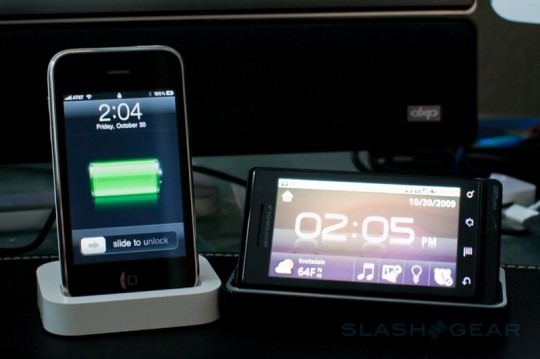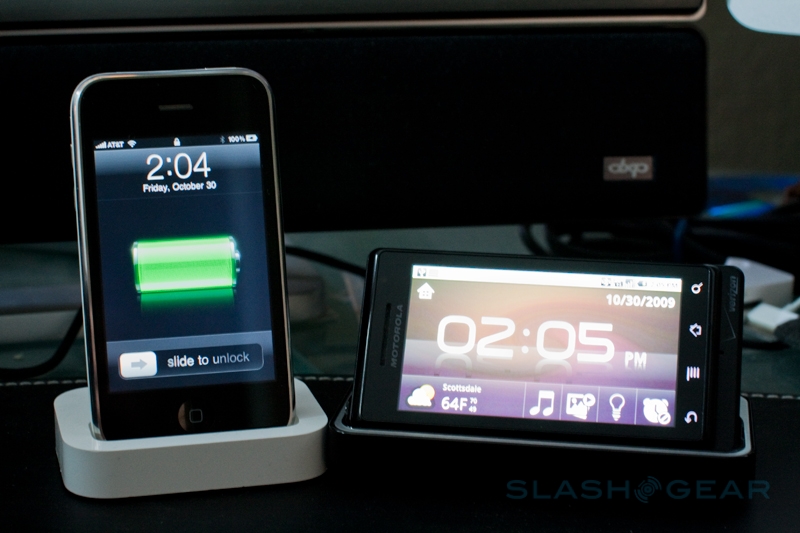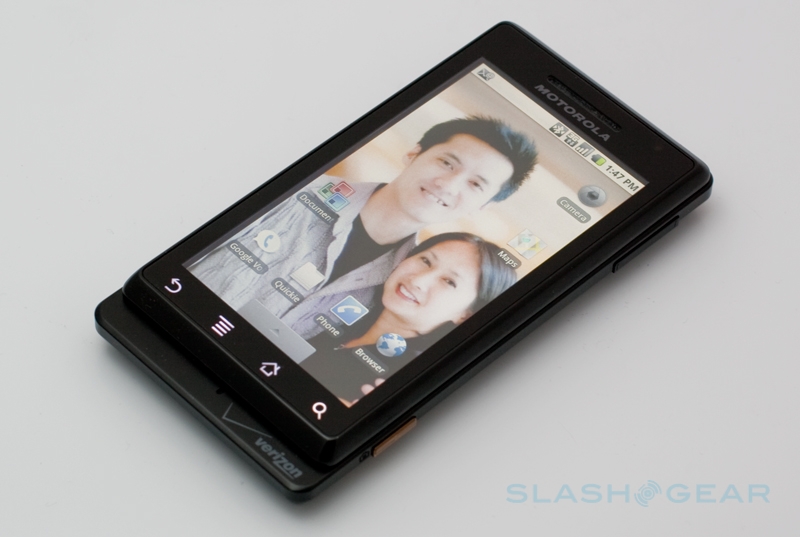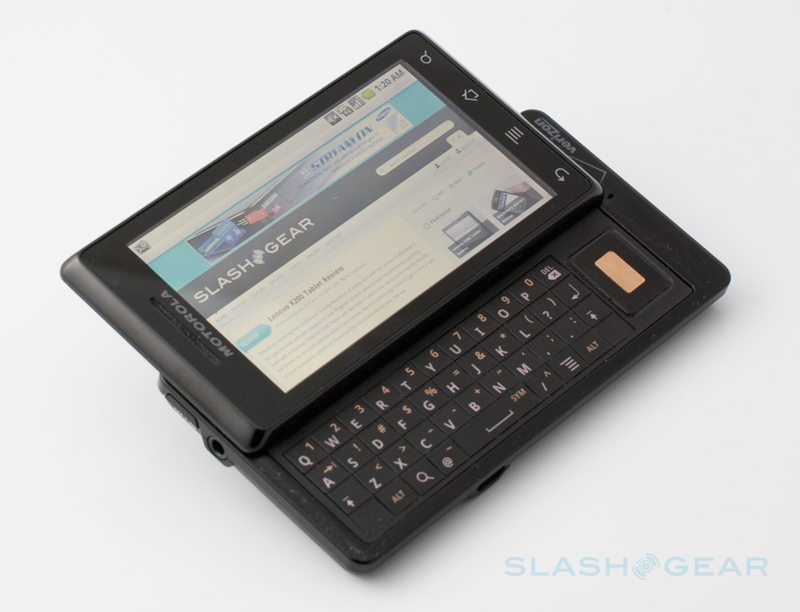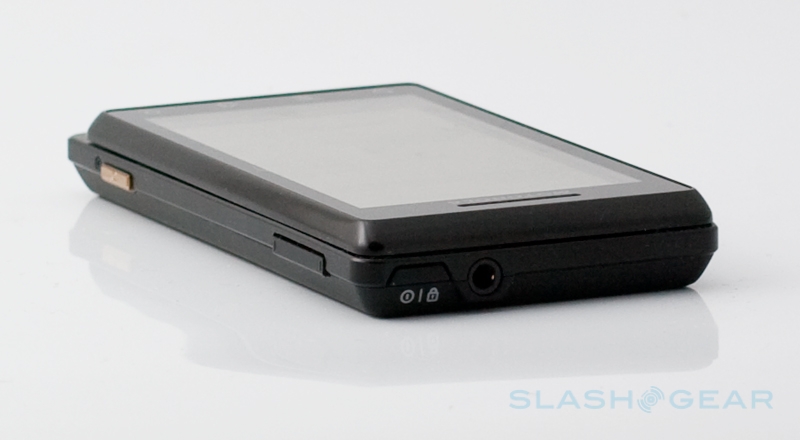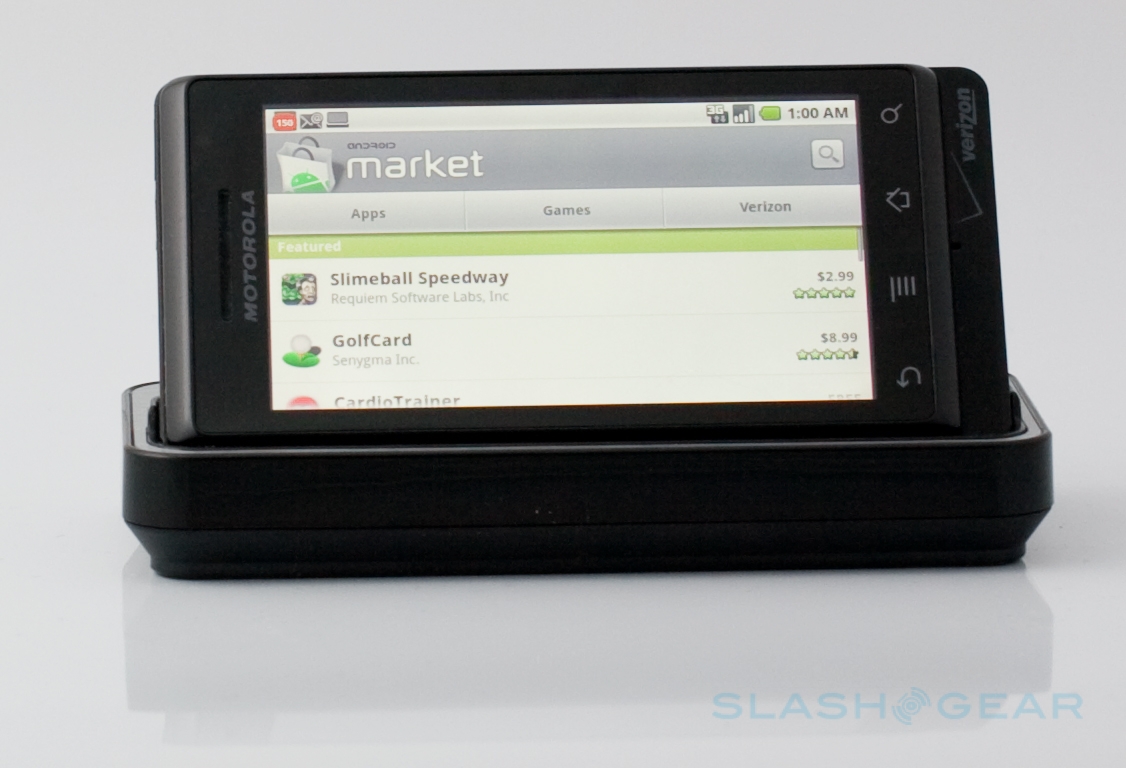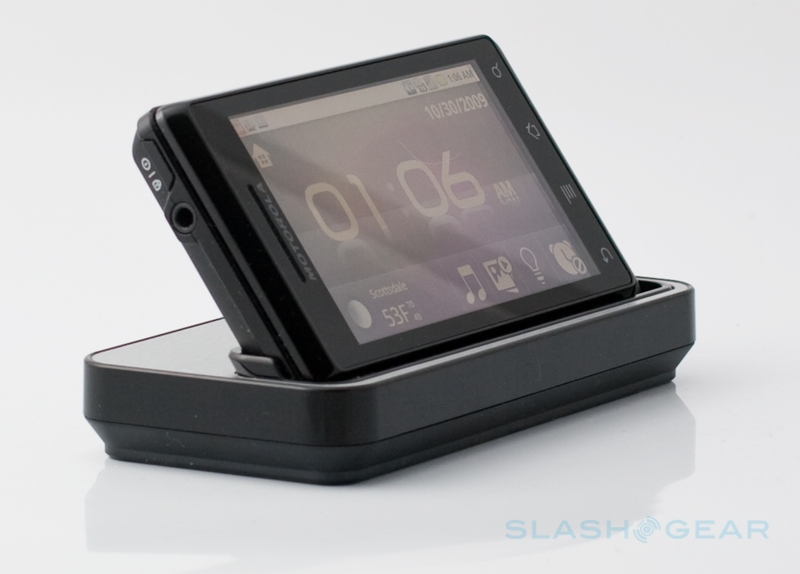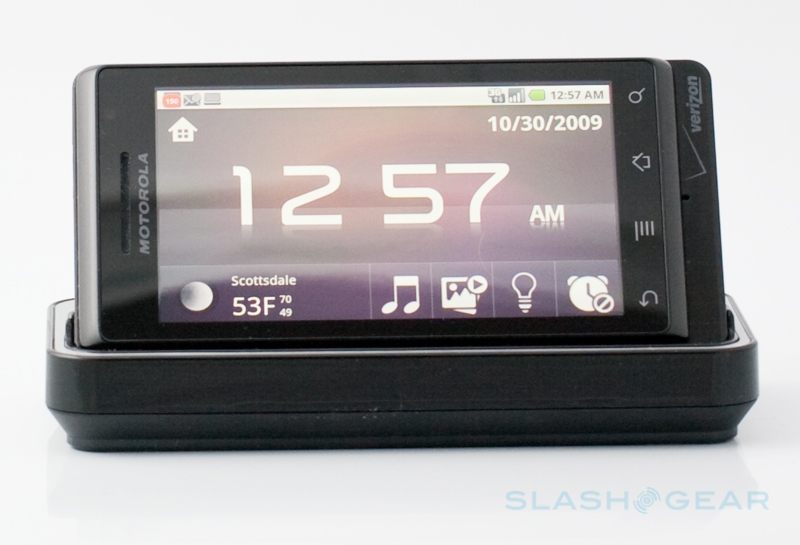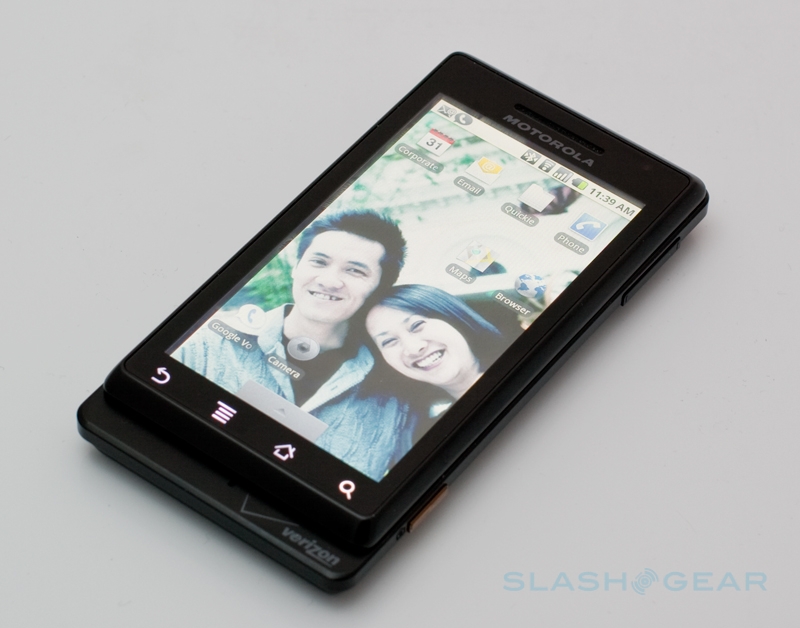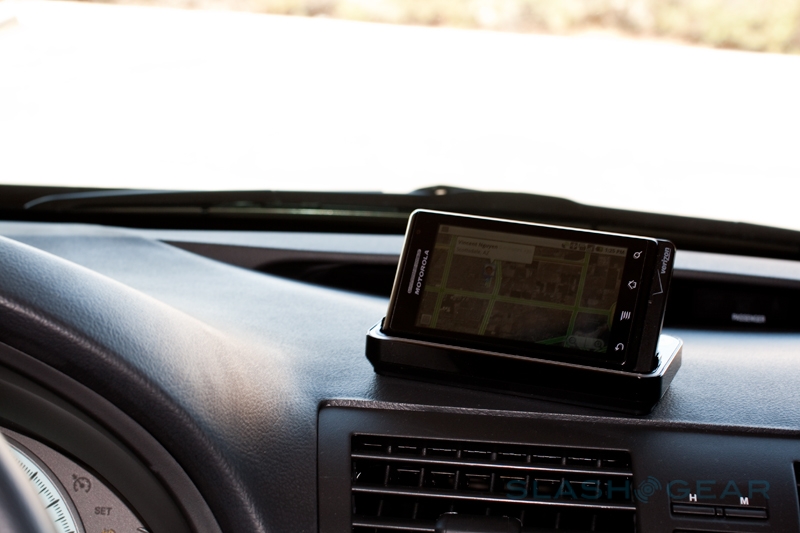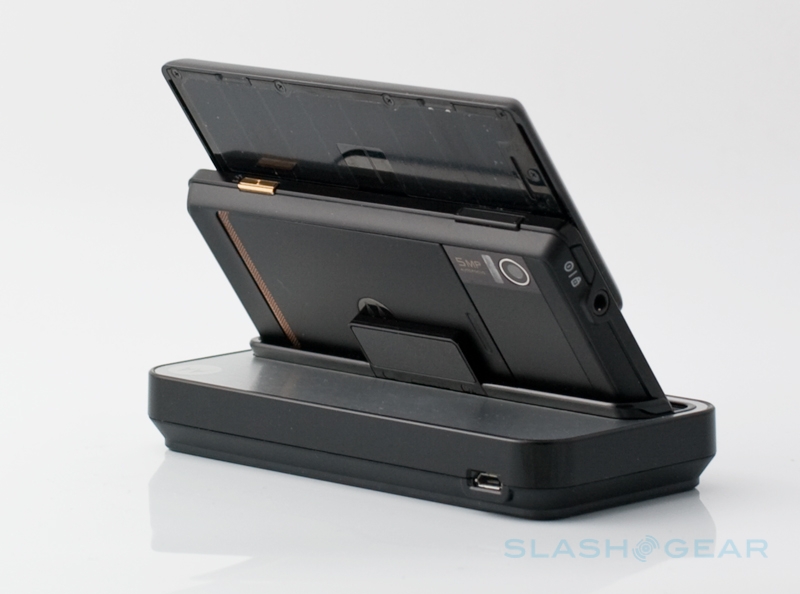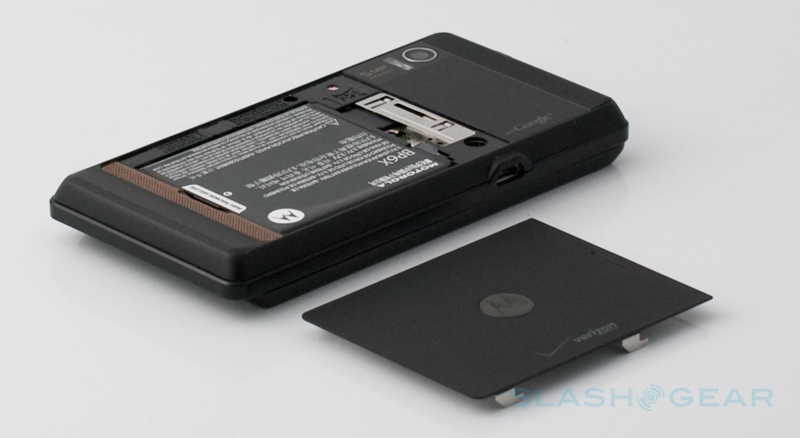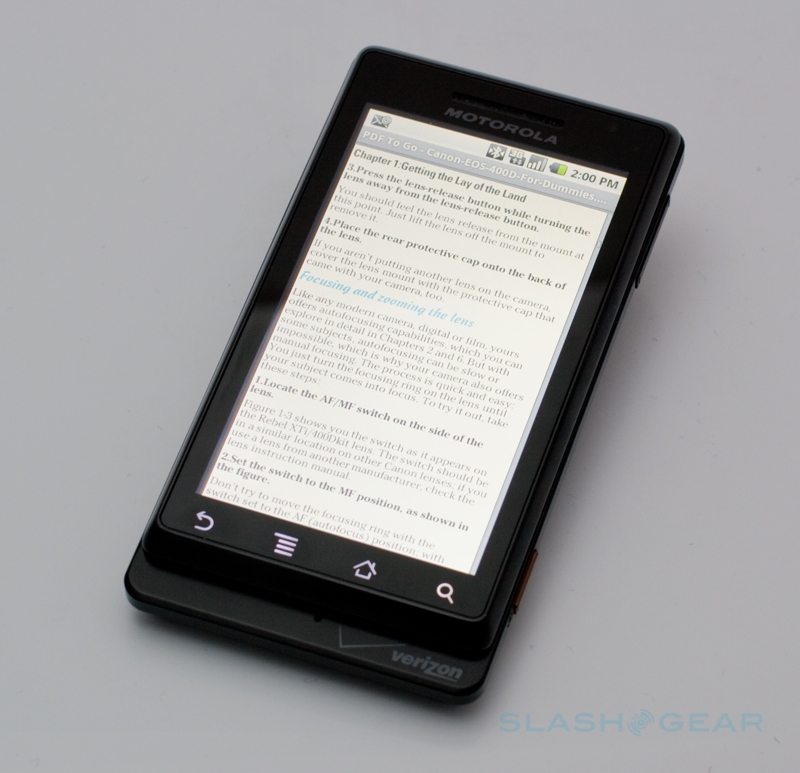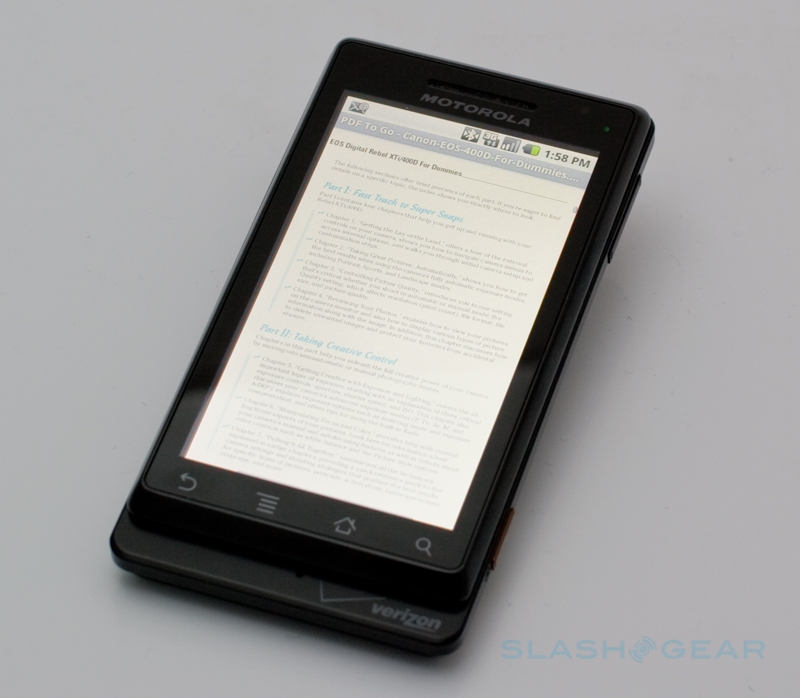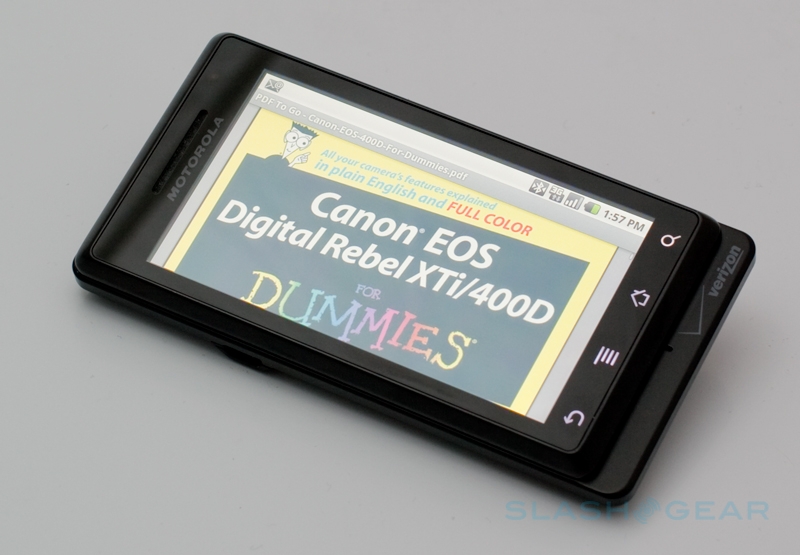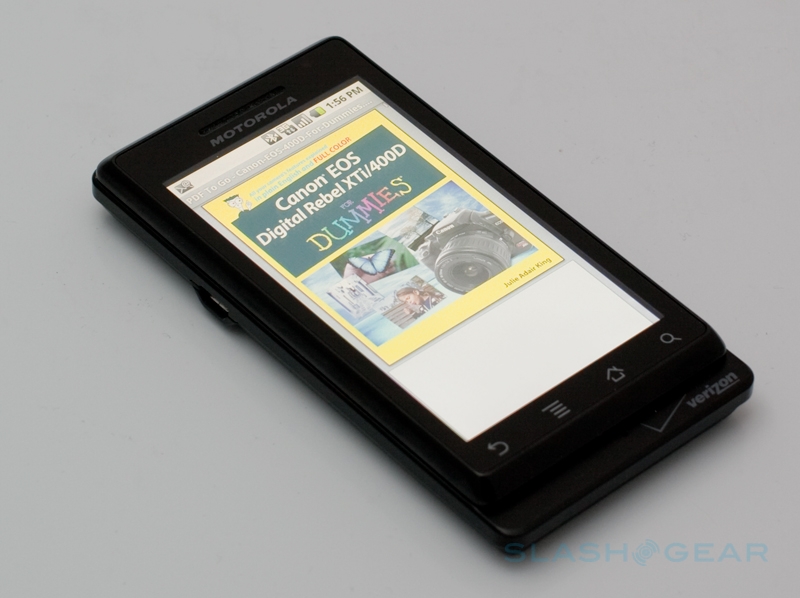Verizon DROID By Motorola Highlights
We've been avidly playing with the Verizon DROID by Motorola since its launch on Wednesday, and while we think it's still too early to give a definitive opinion on the Android smartphone either way, we wanted to share some highlights. The Motorola DROID could be one of the most important smartphones of 2009, so check out our early thoughts on battery life, the QWERTY keyboard, some camera disappointments and more, after the cut.
The DROID's keyboard is less spacious than that of the Samsung Moment that we reviewed earlier today, and we're still not convinced about the positioning of the D-pad where it forces you to stretch your thumb. Auto-correct doesn't appear to work with the hardware keyboard as it does in HTC's system on the Hero and other HTC Sense devices. Backlighting is even, though, and we prefer the keys to those on the T-Mobile G1.
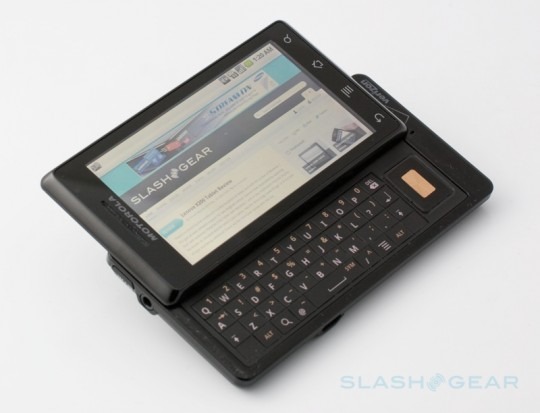
Battery life is the stand-out surprise at this stage, and we're especially enamored by Android 2.0's new gauges, which show what has been consuming the most power. After over eight hours use, with push email and Exchange active, WiFi and Bluetooth turned on, and plenty of use, we were still seeing 30-percent remaining charge. According to the battery app, it's the display that's the most power hungry component: 51-percent of the power had been chomped through by that, with voice calls at 16-percent and the Android System itself accounting for 8-percent. Interestingly, despite reasonably heavy use of messaging and internet access, WiFi and email were both at 4-percent and the browser at just 3-percent.
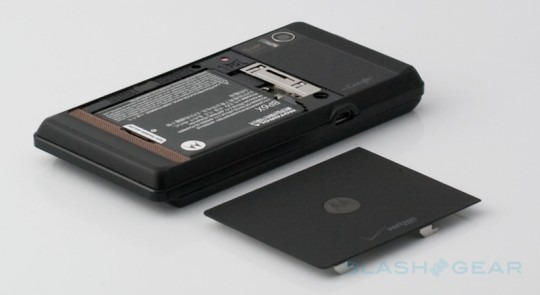
An obvious way to save power, then, would be to turn the display backlighting down, and we'll be experimenting with that over the weekend to see what sort of difference it makes. While we're on the subject, the 3.7-inch 854 x 480 LCD is incredibly bright and crisp, while the capacitive touchscreen is reasonably responsive. The omission of multitouch, which has no provision anywhere natively in Android 2.0, is frustrating.
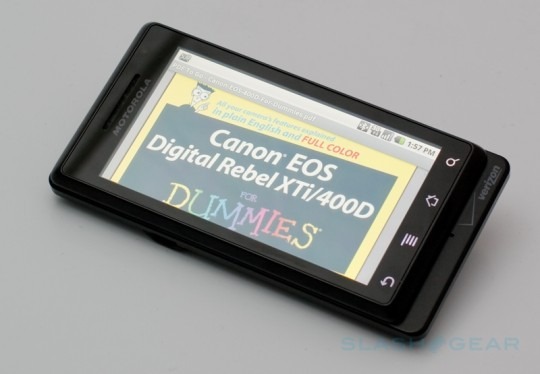
On the downside, we've found a few moments where the DROID seems to bog down. There may only be three homescreen panes – another thing we're unimpressed by, when HTC Sense offer you seven, plus fancy widgets to fill them with – but there's some sluggishness in panning between them occasionally. Similarly pulling down the status bar or – a common Android trouble point – pulling up the launcher menu can be a lumpier experience than you'd expect from the smoothness of the rest of the system. We're talking to Motorola about this, and we're not sure if it's an Android issue, something to do with the DROID specifically, or something else.
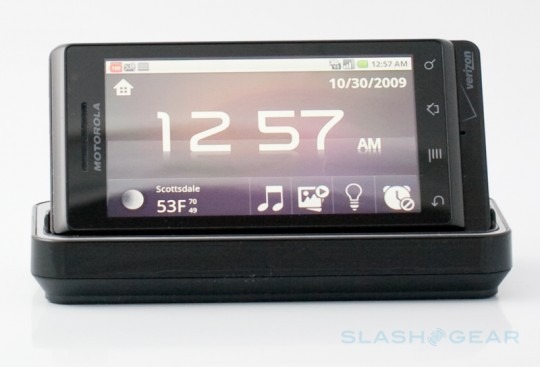
Another disappointment so far has been the camera optics, particularly in the still photos we've taken, and it's difficult to tell whether you're getting more value with the extra megapixels over, say, the iPhone 3GS. Sample images have been grainy and the DROID is slow to lock focus, though the situation is better in video recording. Android 2.0 offers a new set of photo settings to be tweaked, so we'll be experimenting with those to see if we can improve the results.

Sample video taken with Droid – taking off from JFK airport
[vms f3dc4f3cf45f02c61c0c]
As for Android 2.0 itself, the new OS is less obvious in its changes than we expected from the run-up to the release, and much of the functionality seems to have been borrowed or previewed by the work HTC and Motorola have done on distinguishing their own Android handsets. Still, that's not to say it doesn't work, and we're particularly enjoying the unified inbox – which, despite the billing, still keeps Gmail separate from everything else – and the pop-up menu tapping on a contact's name brings, offering the various ways you can communicate with them (email, call, SMS, Facebook message, etc).
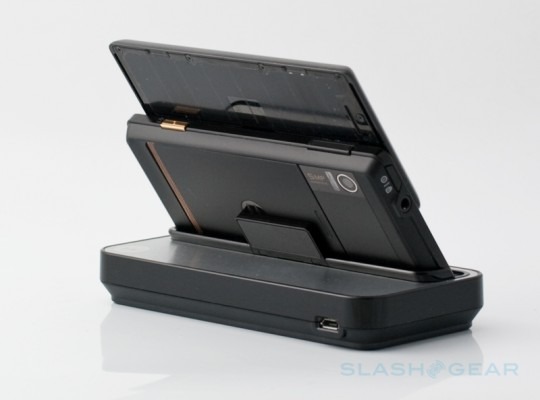
We'll be continuing to explore the Verizon DROID by Motorola this weekend in the run-up to the full SlashGear review next week. If you've any questions about the smartphone that you'd like to see covered in the review, leave us a note in the comments below. We'll try to cover as much as we can.
